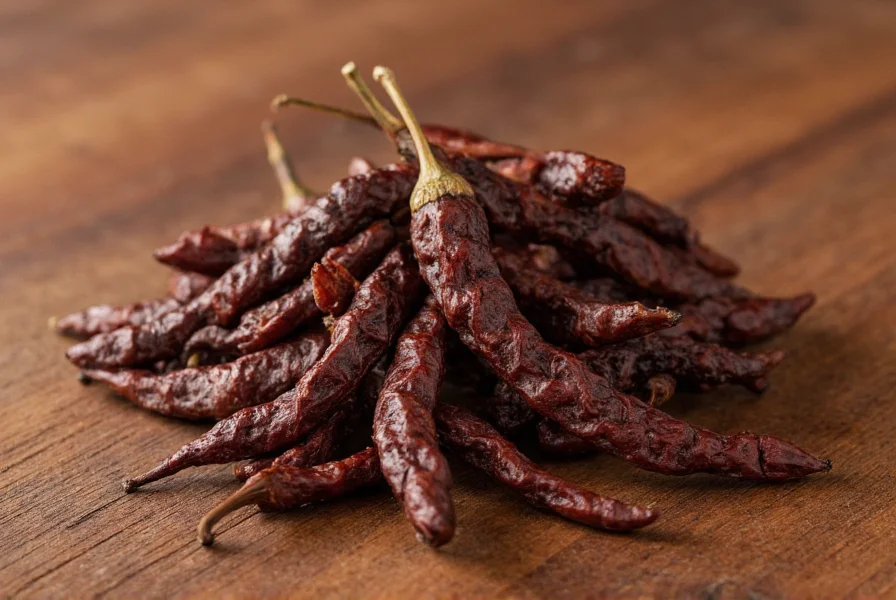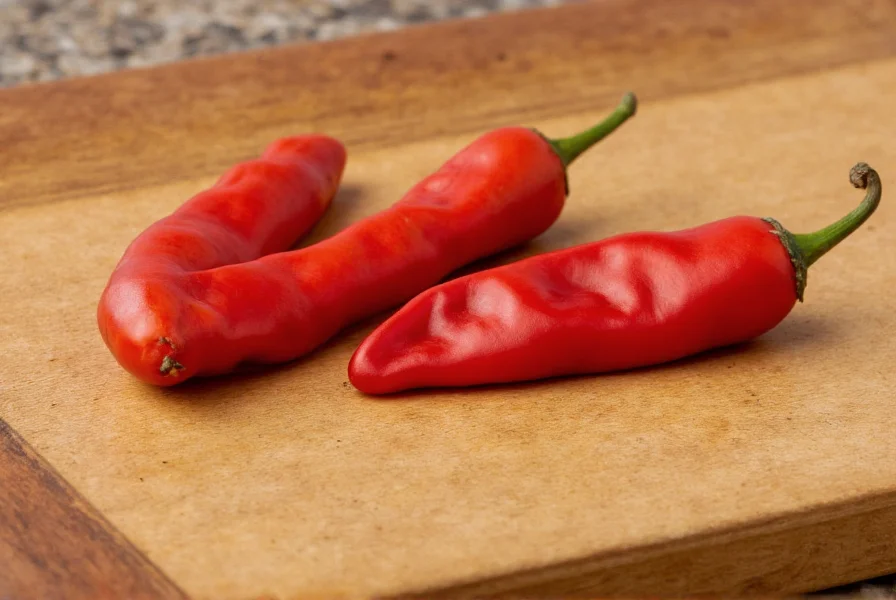Understanding what chipotle peppers are—and aren't—is essential for anyone exploring Mexican cuisine or looking to add authentic smoky heat to their cooking. Many people mistakenly believe chipotle is its own pepper species, but this common misconception can lead to confusion when shopping for ingredients or following recipes.
What Exactly Is a Chipotle Pepper?
A chipotle pepper begins its life as a fully ripened red jalapeño pepper. The transformation happens through a traditional smoking process that typically takes several days. This smoking technique, which originated with indigenous peoples in Mesoamerica centuries before Spanish colonization, serves both as a preservation method and flavor enhancer.
The smoking process gives chipotles their distinctive characteristics:
- Color: Deep mahogany to almost black
- Texture: Leathery and slightly wrinkled
- Flavor profile: Complex smokiness with earthy, slightly sweet undertones
- Heat level: Medium (2,500–8,000 Scoville units), similar to fresh jalapeños but with more concentrated heat

Chipotle Pepper Varieties You'll Encounter
While all chipotles start as jalapeños, you'll find them in several preparations:
| Chipotle Form | Description | Common Uses |
|---|---|---|
| Whole dried chipotles | Complete smoke-dried jalapeños | Rehydrated for sauces, stews, or grinding into powder |
| Chipotle powder | Ground dried chipotles | Dry rubs, spice blends, seasoning meats |
| Chipotles in adobo sauce | Diced chipotles preserved in a tangy tomato-based sauce | Adding immediate smoky heat to dishes like tacos, soups, and marinades |
The Difference Between Chipotle and Jalapeño Peppers
This is where much confusion arises. Understanding the chipotle vs jalapeño difference is crucial:
- Jalapeño: Fresh green pepper, typically harvested before fully ripening
- Chipotle: Made from fully ripened red jalapeños that have been smoke-dried
Think of it like the relationship between fresh grapes and raisins—the chipotle is essentially the "dried version" of a specific stage of the jalapeño pepper. The smoking process fundamentally transforms both the flavor profile and culinary applications.
How Chipotle Peppers Are Made: Traditional Process
The authentic method for creating chipotle peppers involves:
- Allowing jalapeño peppers to fully ripen on the plant until they turn deep red
- Stringing the ripe peppers (a process called "ristras")
- Slow-smoking over wood fires (traditionally oak or hickory) for 2-4 days
- Monitoring humidity and temperature to achieve proper dehydration without burning
This traditional smoking technique concentrates the pepper's natural sugars while developing complex smoky compounds, creating the distinctive chipotle flavor profile that's become popular worldwide.
Culinary Applications of Chipotle Peppers
Chipotle peppers bring a unique dimension to dishes that fresh jalapeños simply cannot match. Their smoky depth works particularly well in:
- Mojo rojo: Traditional Mexican sauce for meats
- Barbecue rubs: Adding complexity to dry rubs for meats
- Bean dishes: Transforming simple beans into something special
- Mayo and aiolis: Creating smoky dipping sauces
- Marinades: Particularly for chicken and pork

Working With Chipotle Peppers: Practical Tips
When incorporating chipotle peppers into your cooking, keep these practical considerations in mind:
- Rehydration: For whole dried chipotles, soak in hot water for 20-30 minutes before use
- Seeds and ribs: These contain most of the heat—remove them for milder flavor
- Start small: Chipotles have concentrated heat—add gradually and taste as you go
- Storage: Keep dried chipotles in airtight containers away from light; they'll maintain quality for 6-12 months
- Substitutions: If you don't have chipotles, a combination of smoked paprika and cayenne can approximate the flavor (though not perfectly)
Common Misconceptions About Chipotle Peppers
Beyond the basic "is chipotle a pepper" confusion, several other misconceptions persist:
- Misconception: Chipotle is a brand name
- Reality: It's a traditional preparation method with indigenous origins
- Misconception: Chipotle peppers are significantly hotter than jalapeños
- Reality: The heat level is similar, but concentrated due to dehydration
- Misconception: All smoked peppers are chipotles
- Reality: Only smoke-dried jalapeños qualify as true chipotles
Why Chipotle Peppers Have Endured Through Centuries
The continued popularity of chipotle peppers isn't just culinary fashion—it represents a practical solution that indigenous peoples developed long before modern refrigeration. Smoking was an effective preservation technique that also enhanced flavor. Today, we appreciate chipotles not just for their practicality but for the unique depth they bring to dishes.
Understanding that chipotle refers to a preparation method rather than a distinct pepper variety helps cooks use these ingredients more effectively. Whether you're working with whole dried chipotles, chipotle powder, or the popular chipotles in adobo sauce, knowing their origin and characteristics will help you incorporate their distinctive smoky heat into your cooking with confidence.
Frequently Asked Questions
Is chipotle a type of pepper or a preparation method?
Chipotle is not a specific pepper variety but rather a preparation method. It refers to ripe red jalapeño peppers that have been smoke-dried. The term comes from the Nahuatl words 'chil' (chile pepper) and 'poctli' (smoked), meaning 'smoked chili.'
How hot are chipotle peppers compared to fresh jalapeños?
Chipotle peppers have a similar heat level to fresh jalapeños (2,500–8,000 Scoville units), but the heat feels more concentrated because the smoking process removes moisture, intensifying all flavors including the capsaicin that creates heat. The perception of heat can also be influenced by the adobo sauce when purchased in that form.
What's the difference between chipotle powder and smoked paprika?
Chipotle powder is made exclusively from ground smoke-dried jalapeño peppers, while smoked paprika comes from smoked bell peppers or other sweet peppers. Chipotle powder has noticeable heat and a more pronounced smoky flavor with earthy undertones, whereas smoked paprika ranges from sweet to hot but generally has a milder, more rounded smokiness without the distinctive jalapeño flavor.
Can I make my own chipotle peppers at home?
Yes, you can make chipotle-style peppers at home by allowing jalapeños to fully ripen to red, then smoke-drying them. You'll need a smoker and patience—the process typically takes 2-4 days at 200-225°F. While not identical to traditional Mexican methods (which often use specific woods and techniques), home-smoked jalapeños will give you that characteristic chipotle flavor.
Why are chipotles often sold in adobo sauce?
Chipotles in adobo sauce are a practical preparation that rehydrates the dried peppers while adding complementary flavors. The adobo sauce (typically made with tomatoes, vinegar, garlic, and spices) softens the peppers, making them ready to use, and creates a flavorful paste that distributes the chipotle's smoky heat evenly throughout dishes. This preparation extends shelf life while maintaining quality.











 浙公网安备
33010002000092号
浙公网安备
33010002000092号 浙B2-20120091-4
浙B2-20120091-4